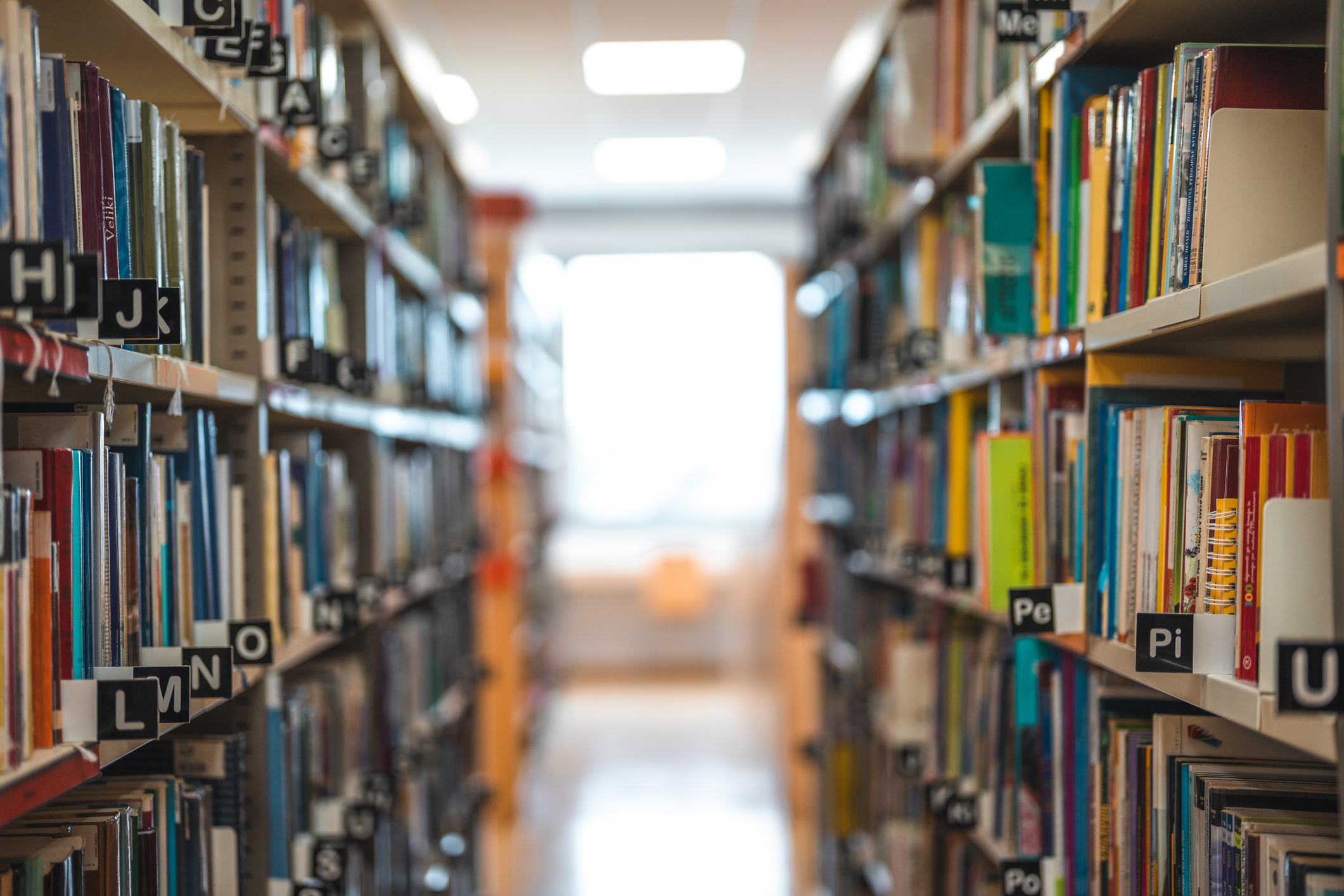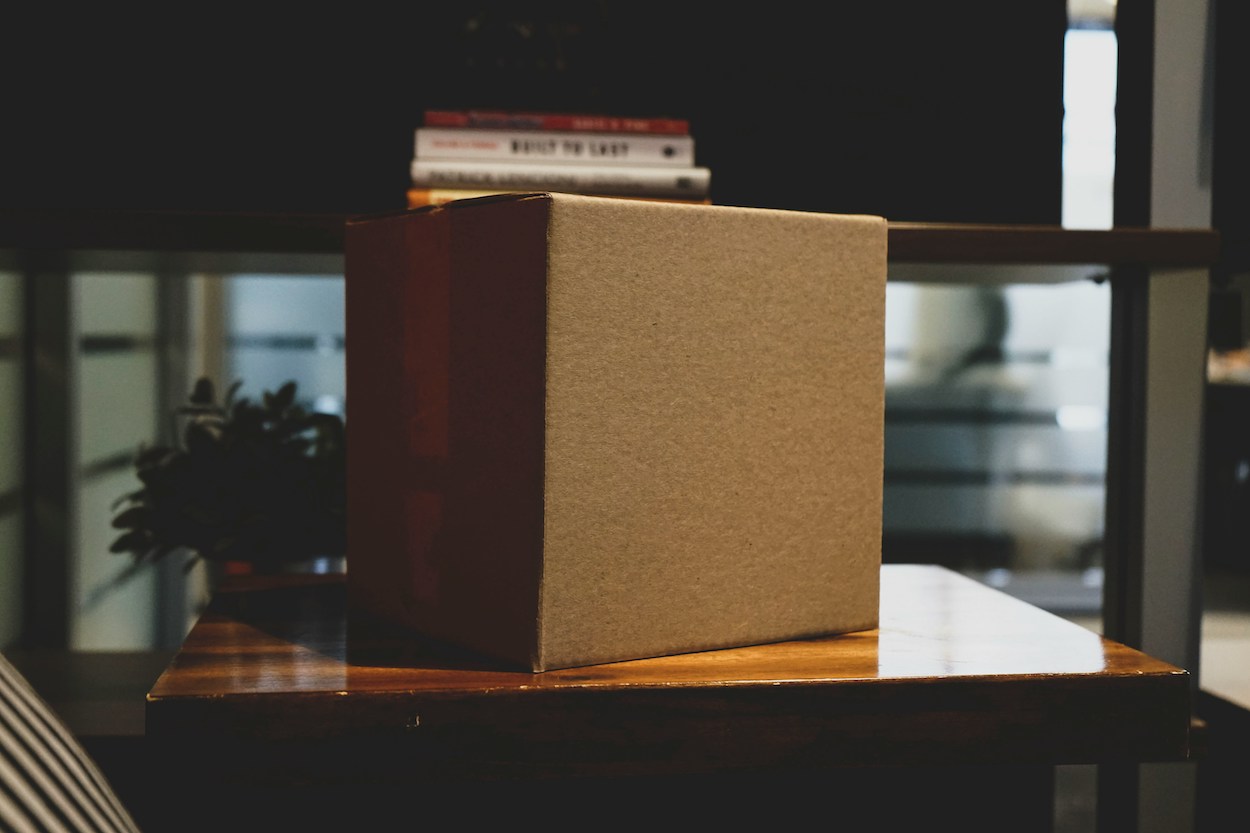Featured in

MY LOCAL LIBRARY sat on top of a steep hill, across the road from the local doctors’ and a block away from the brown-blue foreshore of Lake Macquarie, where a pelican once chased me to the edge of the flaking jetty for a bite of my vinegar-soaked chips. When I was small, Mum and I would venture up the hill to the library with sweat-drenched T-shirts and aching limbs. We were grateful for the free air conditioning and a few moments of rest. There was no shouting here. No plates smashing against tiles or fist-sized holes in the white walls. In our little bubble among the stacks, where words and worlds sprang to life, Mum would joke, Thank the lord for libraries. Feels like it costs money just to leave the house these days. As a child, I never fully grasped her meaning. As an adult, I understand that the library was often the only place we could go to sit and relax and just be without having to pay for it.
When I was an angsty teenager, I became overly familiar with the far back corner where the YA books were kept, the stringed-up paper banner that read ‘Teens’ and the polypropylene carpet tiles that layered navy blues, light greys and every imaginable shade of brown. After school, I’d hurry to my favourite spot, make myself a nest of beanbags, and do my homework or read until the librarians made the closing announcements. I felt like Matilda in that back corner. You know the scene. The one where she walks to the library alone, looking like a tiny porcelain doll among the hurried adult pedestrians and a larger-than-life truck, just to sit in her armchair with a book in her lap, absorbing story after story.
Libraries have always played a huge role in my life. Now, in a different city far from the lakeside town I grew up in, I still have my routine, my favourite spot, a fondness for DIY signage. And yet, I never saw myself as a librarian until a few years ago.
The librarians I remember as a child were the classic stereotype that helped Matilda obtain her first library card: middle-class, middle-aged (or older) white women who loomed behind the reference desk like patient crows, and who pulled stellar book recommendations out of thin air. But I never saw someone like me or my family behind the desk, and so I never pictured myself sitting there. More than that, I never questioned the lack of diversity in the staff or on the shelves. Nobody else pointed it out to me either. This is the silent truth of colonisation, where whiteness is positioned as the norm.
IN ADDITION TO libraries, I’m a fiend for a good museum or gallery exhibition. I clearly recall visiting the BHP simulation at the Newcastle Museum with Mum and my brother for the first time. The simulation incorporates a flashy lighting and smoke show, a holographic ex-employee who narrates the story, and the perfect mix of humour and tension as it takes audiences through a day in the life at the old steelworks, which shut down in 1999 after eighty-four years of operation. The BHP steelworks was a staple of Newcastle’s history and the impact of its closing can still be felt throughout the area. What is often left out of the discussion is the contribution of Indigenous peoples to the industrial history of Newcastle.
John Maynard wrote about Aboriginal workers at the BHP steelworks in Newcastle and how, during this period, traditional Aboriginal industrial knowledges and practices were re-established. While the steelworks were alluded to as an inclusive workplace that ‘did not care who you were’, Aboriginal workers were still likened to ‘a load of coal’. This casual racism, which hits you like a bullet and gets played off as humour, was the reality of my youth. This is not surprising considering Australia as we know it today was built on the lie of terra nullius – the idea that this continent was uninhabited when the British invaded. This act of erasing the past and excluding marginalised voices helped settler-colonists construct a new narrative and establish a status quo that favoured their Euro-centric, Christian idea of what was ‘neutral’ within society, and what was ‘other’.
Anastasia Chiu, Fobazi M Ettarh, and Jennifer A Ferretti wrote that, in the US, it’s not uncommon for Black and Latinx patrons to be over-policed and racially profiled within libraries. They state that it is only when these non-white bodies have been removed that the library can revert to its ‘default or neutral state’ [their emphasis]. Australia is not immune to this racial bias. I’ve witnessed the beady-eyed security guard who follows the dark-skinned girl through an art exhibition, and the library front-of-house staffer who snorts at an elder’s heavily accented English. If you haven’t witnessed anything like this, there are only two reasons. One, you live in a utopia where difference is acknowledged, understood and celebrated. Or two, this behaviour is so ingrained into the fabric of society that you never register it as wrong or questionable. And why would anybody question GLAM institutions – beacons for community that, in their mission statements, claim that everyone is welcome – especially when that institution is only upholding the status quo, as it was designed to.
I STUDIED THE ancient history of the Mediterranean at university. I was often overwhelmed by the amount of research on almost every topic, including niche subjects such as why the flamen dialis,the priest of Jupiter, buried his nail and hair clippings under one particularly sacred tree, and that time a man snuck into the secretive and sacred women-only festival of Bona Dea in 62 BC and almost destroyed Julius Caesar’s political career. It’s enough to reboot Gossip Girl. Again.
As I studied my niches, a lecturer mentioned the long and enduring history of the land on which we lived and learned. It was he – a French professor of Egyptology – who first showed me how I can begin accessing the tens of thousands of years’ worth of Indigenous cultural knowledge that exists on this continent. Knowledge that is widely accepted to be older than the Greek and Roman civilisations I was reading about. This experience made me question why I had never been taught this before.
I am now privileged to work in an academic library with an abundance of published and unpublished material relating to Aboriginal and Torres Strait Islander peoples, cultures and languages. Access to one’s cultural heritage is not a given when you’re an Aboriginal person. While I could easily find and access material relating to Greek and Roman cultures during my undergrad, finding and accessing information about my Wiradjuri and Biripi heritage was not as easy to come by. This was compounded by the dislocation, disconnection and shame that made my ancestors and family forget or be unwilling to share information relating to our cultures.
To add insult to injury, the coloniality of the academic library is often doubled. Not only is it a library, but it is also housed within a university. To many, this is akin to coming up to a double-barred gate with a dozen locks and no key or passcode to gain entry. Prior to working in academic libraries, I would never have thought it was a space that the general public could enter. Chiu, Ettarh and Ferretti discuss the idea that, because everyone is seemingly welcome in libraries, racism does not exist within them. What this ideal fails to understand is that, while everyone is welcome now, these spaces are not always welcoming.
As an undergraduate, I studied at Macquarie University, not far from Lake Macquarie. These pivotal places of my adolescence were both named after Lachlan Macquarie, the fifth governor of New South Wales. He and his policies contributed to the murder of many Aboriginal people. Each day during my undergrad, I would pass the library, and when I had to venture in, I passed the Lachlan and Elizabeth Macquarie Room – the original parlour room from the Macquarie family estate in Scotland. Being forced to interact with this space was the first time a library made me feel so physically uncomfortable that my skin itched. I knew then that this place was not built for people like me; that I was only allowed into this institution because I was deemed ‘intelligent’ enough by European standards; that I was seen by many as an exception, as ‘one of the good ones’.
MY FIRST GLIMPSE into the sector is thanks to an Aboriginal librarian at the National Young Writers’ Festival in 2018. We stood in a haze of smoke and a chattering of writers and performers in a bricked alcove at the back of Watt Space Gallery, a long-running community art space in Newcastle. I spoke to them about my latest quarter-life crisis: finding a stable job with a history degree and a handful of published poems under my belt. They shared their own tale of decolonising GLAM (the acronym combining galleries, libraries, archives and museums). Then, they planted a seed. Have you thought about becoming a librarian?
Our collective histories – the good, the bad and the in-between – are essential to truth-telling and healing in contemporary Australia. It’s past time for GLAM institutions – and those of us who work in them – to look inward and examine the stories we’re perpetuating. It’s time for Indigenous people to freely and safely enter these institutions. It’s time to tell stories of colonisation with input from those who have been colonised. Stories of ‘epic’ explorers who, to some, were also tyrants and murderers. Stories of Aboriginal workers who are also up for some hard yakka. It’s time for mob to access information and safeguard knowledges for present and future generations the right way, not the white way.
I have a deep love and appreciation for this sector. I still step into a library with the wonderment of a toddling Matilda. Settling deep into a beanbag reminds me of my youth tucked away in the ‘Teens’ corner. The whiff of an old book takes me back to those moments with Mum and the quiet expanse of that Lake Macquarie council library. These fond memories don’t cancel out the bad ones, but I think it’s possible to enjoy these spaces while understanding the complicity they play in society. I cannot undo structural racism, but I can be that librarian in the building and behind the desk that makes these spaces a little brighter, a little safer, a little Blaker for people like me.
This piece was commissioned by Darby Jones at State Library of Queensland’s black&write! project as part of ‘Unsettling the Status Quo’, thanks to support from the Copyright Agency Cultural Fund.
Share article
More from author

For all we do in the dark
Non-fictionI DEAL WITH grief the way I deal with most trauma. I keep it locked away in a dilapidated archival box – one of the brown ones...